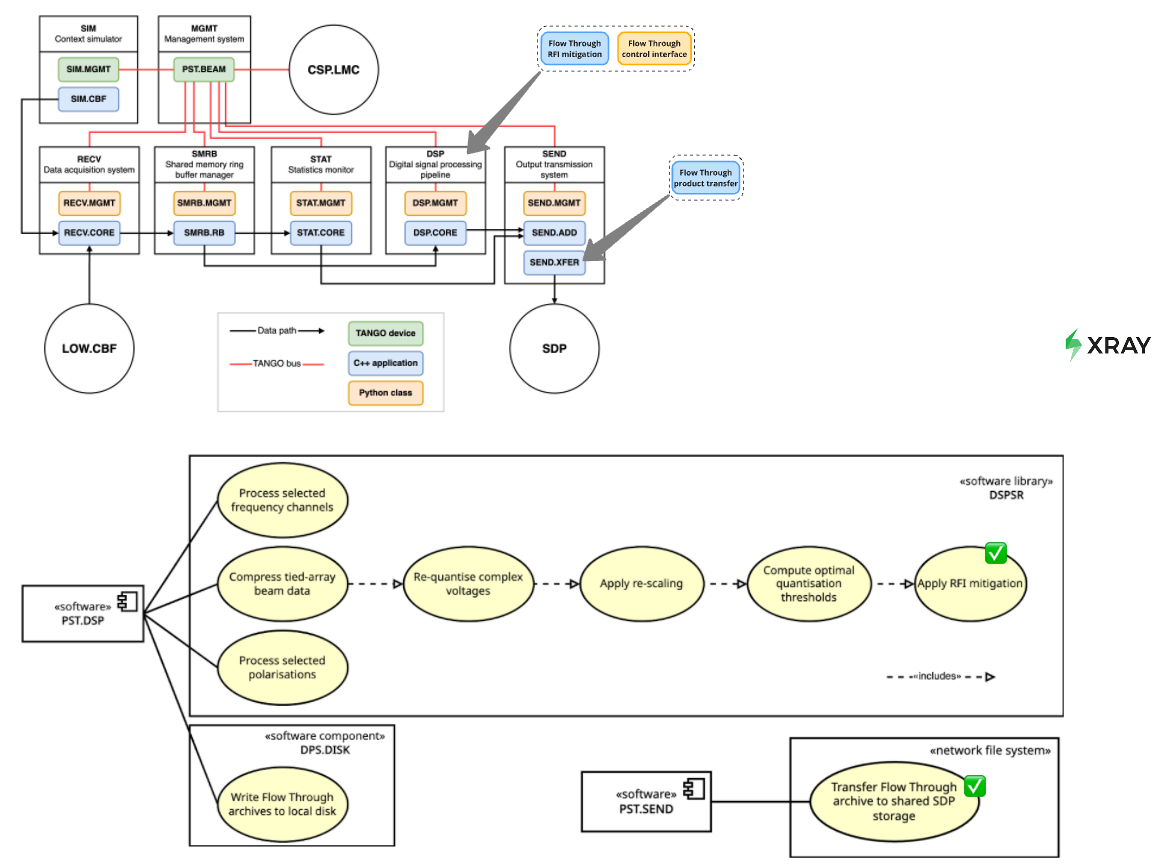Details
-
Feature
-
Medium
-
None
-
Data Processing
-
2
-
2
-
0
-
-
Description
https://miro.com/app/board/uXjVK6Lrdw4=/?moveToWidget=3458764592641335641&cot=14
Beneficiaries (Who)
Commissioning scientists; system integrators; data product dashboard users; low-level RFI investigators
Benefit Hypothesis (Why)
The completion of the first iteration of a fully functional Flow Through mode will provide a tool for commissioning and system scientists to test tied-array beamforming on known sources, using configurable bandwidth, polarisation and dynamic range, and characterise the telescope performance without dealing with the large volumes of voltage data. For AIV, completion of this mode will provide the earliest opportunity to verify a PST Observatory Data Product together with the control software and the beamformers. Also, the development of the Flow Through mode will enable developers and users of the Data Product Dashboard to implement support for this mode and provide easy access and visualisation of Flow Through archives. Finally, the RFI algorithms of Flow Through will provide the first opportunity in AA0.5 to investigate, using the AA0.5 Low array, the amount and type of low-level radio interference that is only detectable after tied-array beamforming.
Flow Through mode: Typical tied-array beam observations at the full temporal resolution and over the full frequency band generate large amounts of data. The PST 'Flow Through' mode is a useful implementation that allows a commissioning scientist to record only a configurable portion of the band and with reduced bit-depth per sample. The ability to record a compressed version of the data is critical for reducing the turn-around time between obtaining and processing the data of an observation, and shortens the testing–learning–development cycles during telescope commissioning. Early commissioning tests of long-track pulsar observations, drift-scans of bright sources, as well as investigations of low-level RFI in the tied-array beam will benefit from such an implementation.
Description (What?)
Implementation and integration of the RFI mitigation algorithms in Flow Through. Integration of the TANGO monitor and control interface for Flow Through. Generation and transfer of Flow Through archives to SDP (via proto-SEND), including data, statistical summaries and metadata.
Acceptance Criteria
- Implement the RFI mitigation algorithm in the Flow Through mode, to enable re-quantisation without clipping (2 FP).
